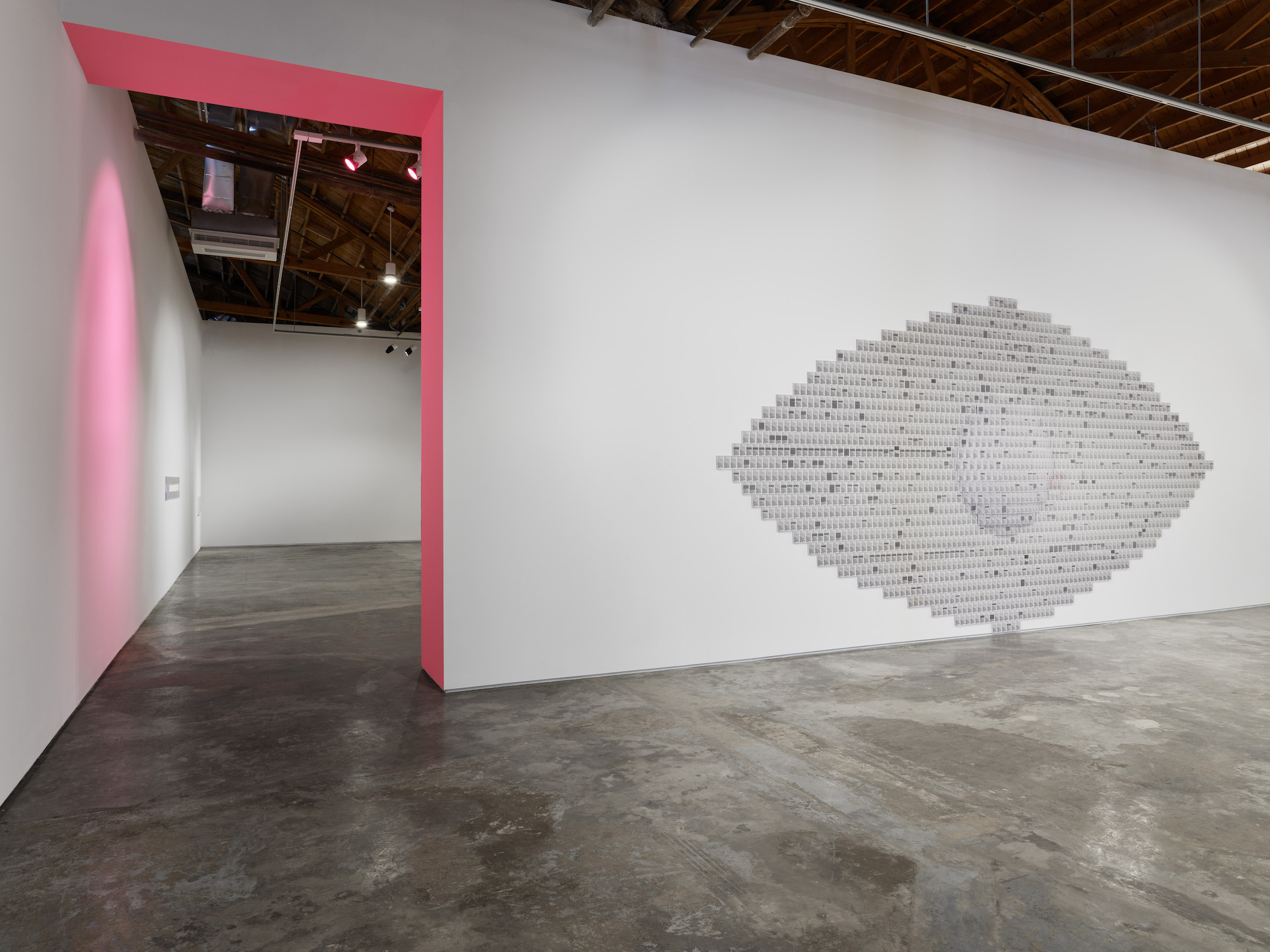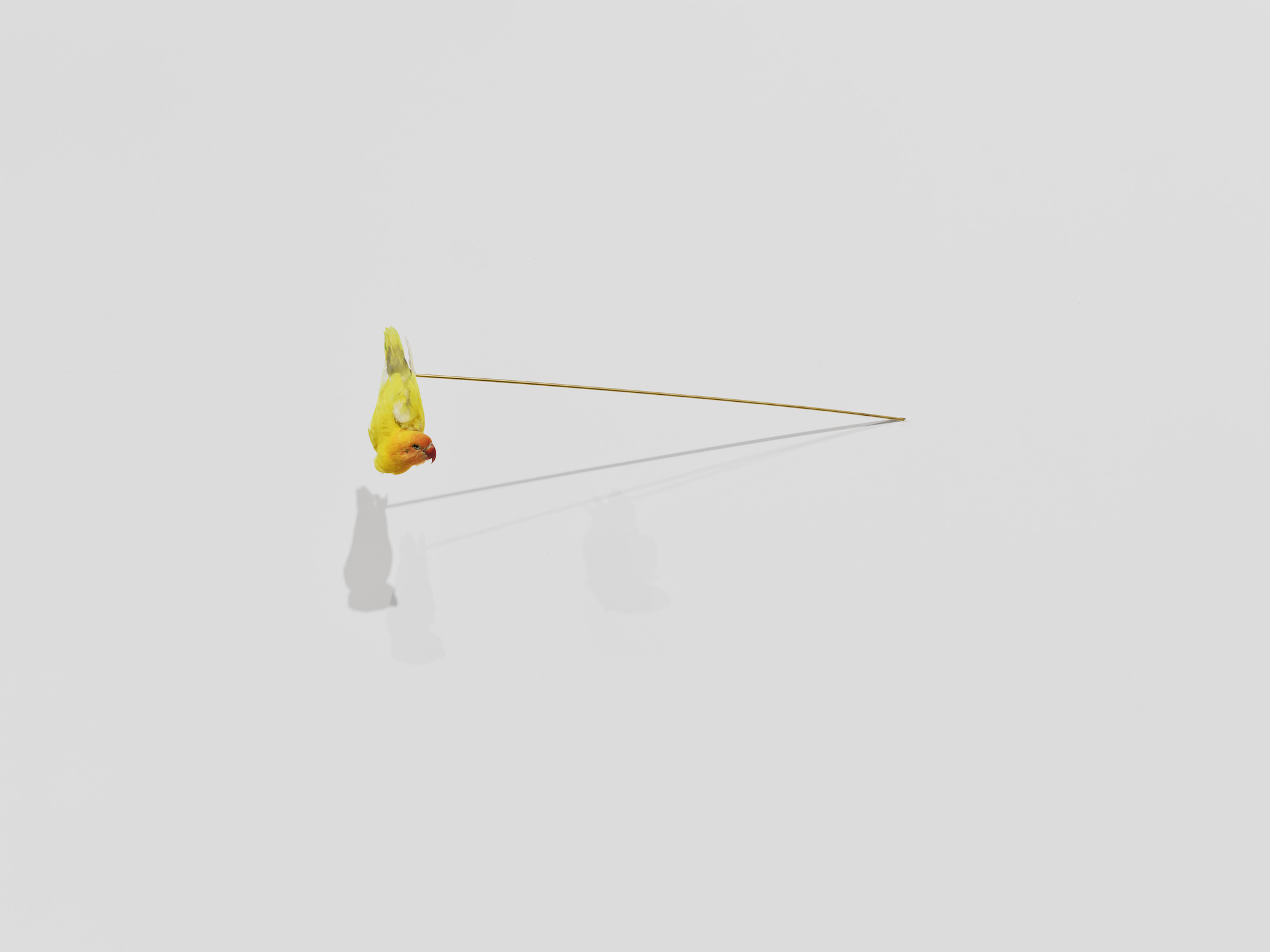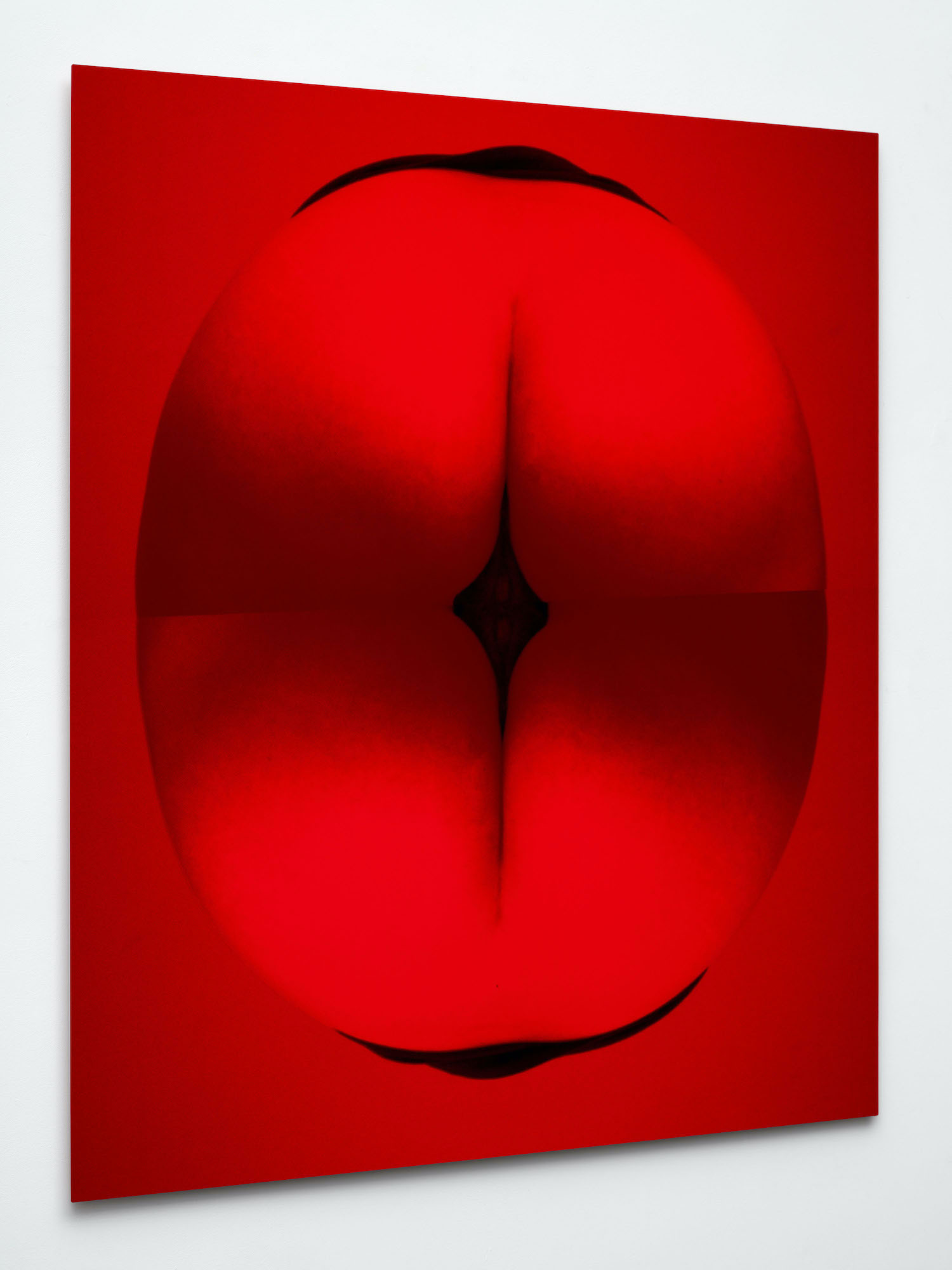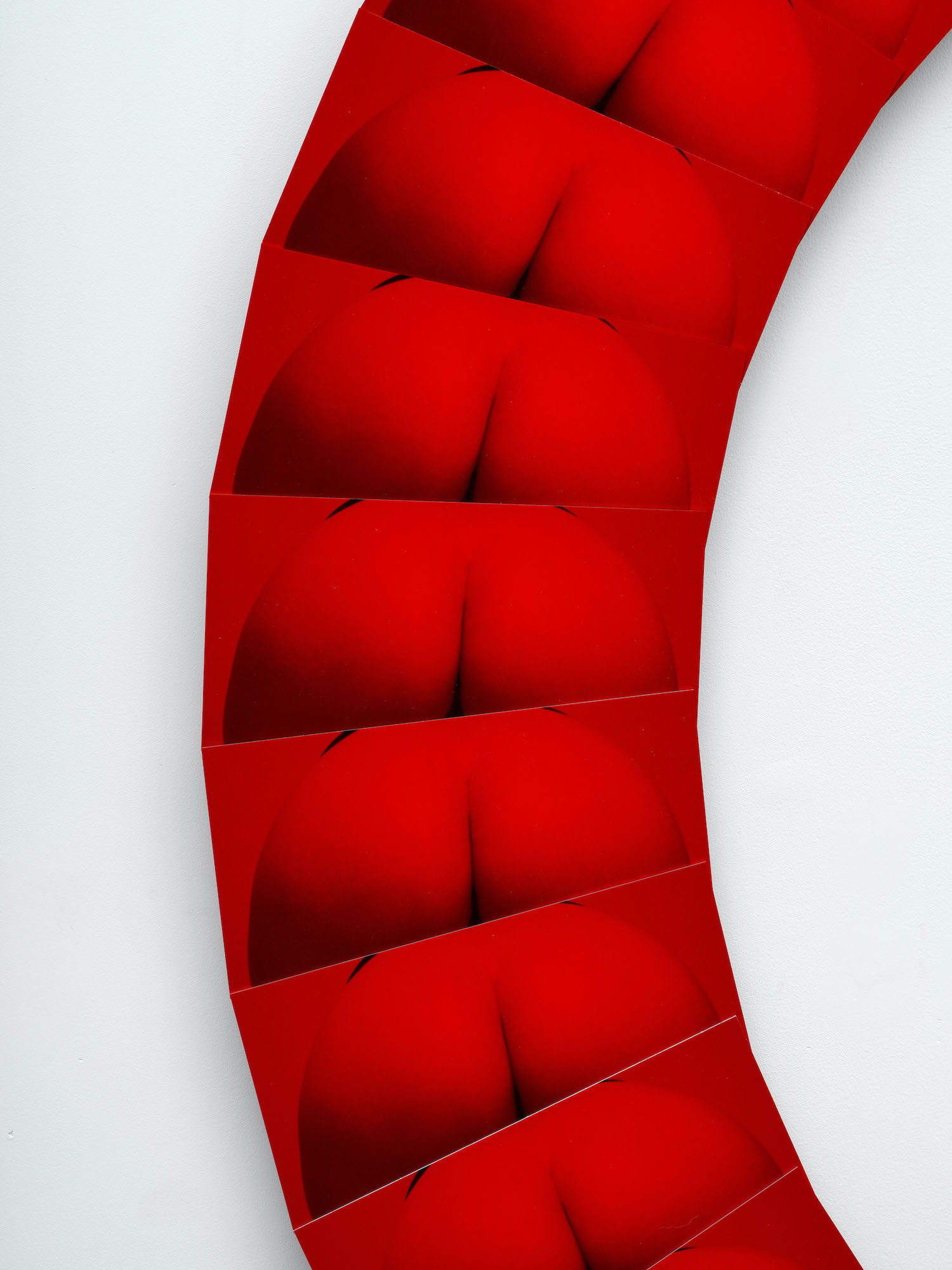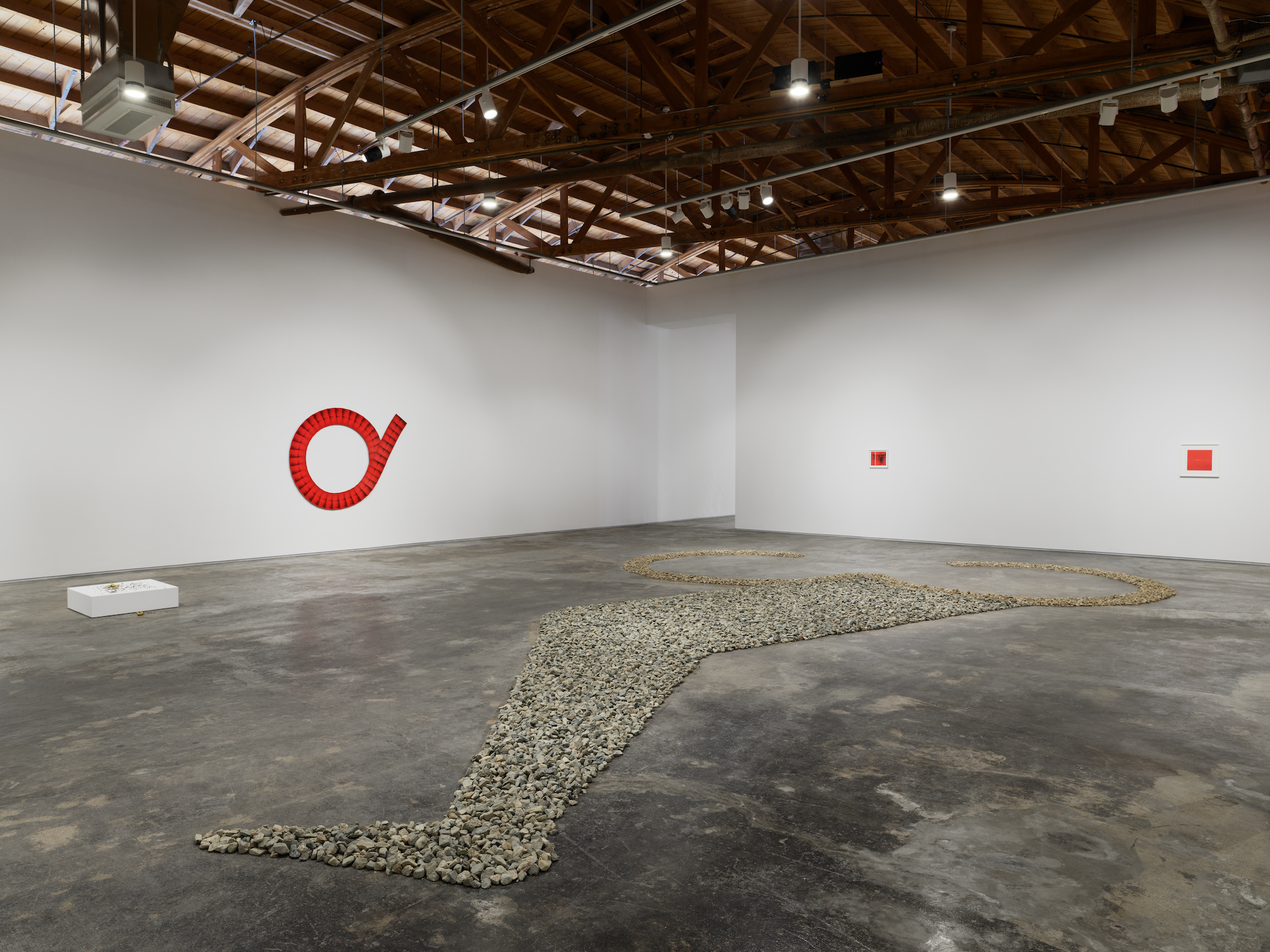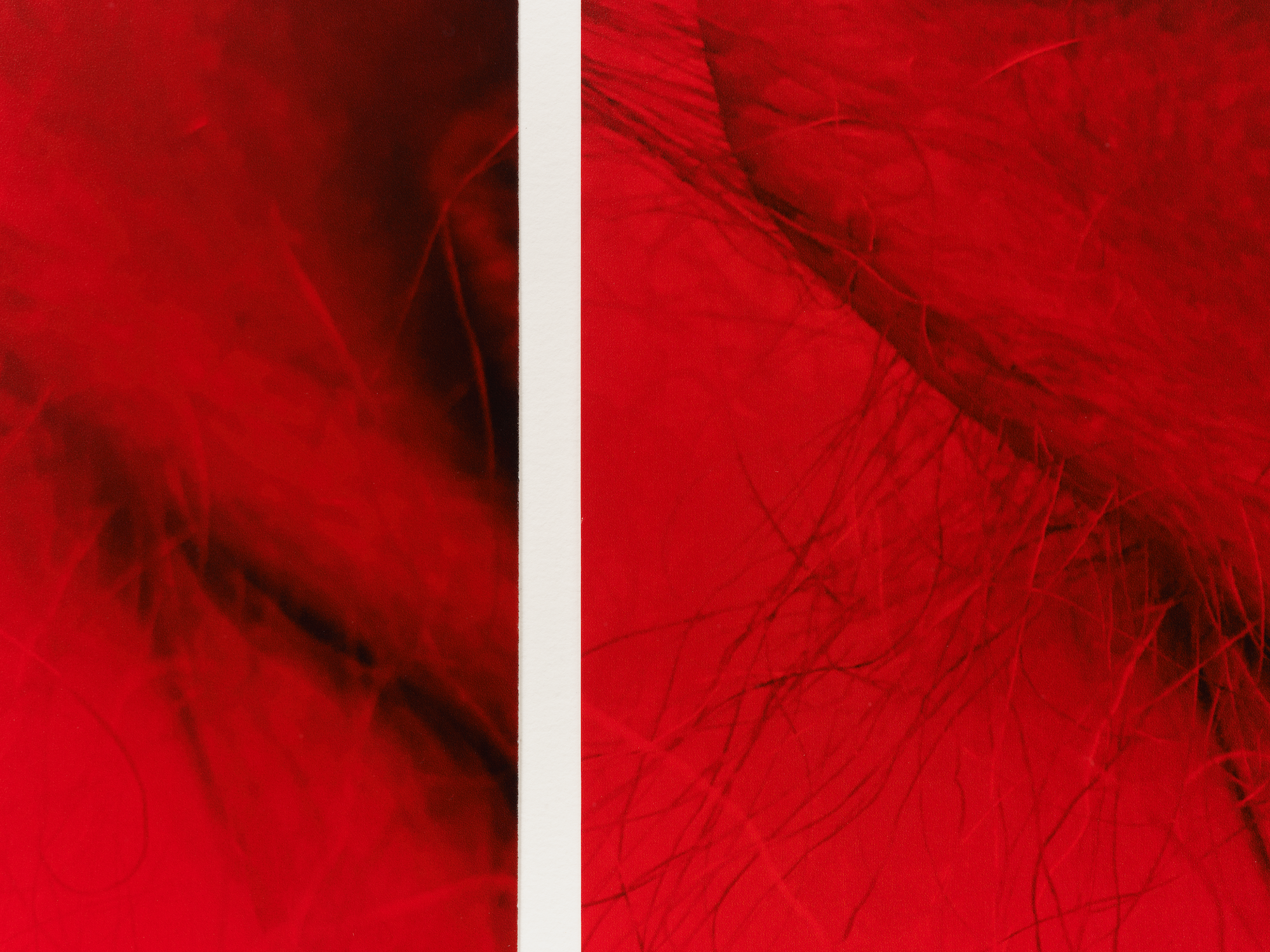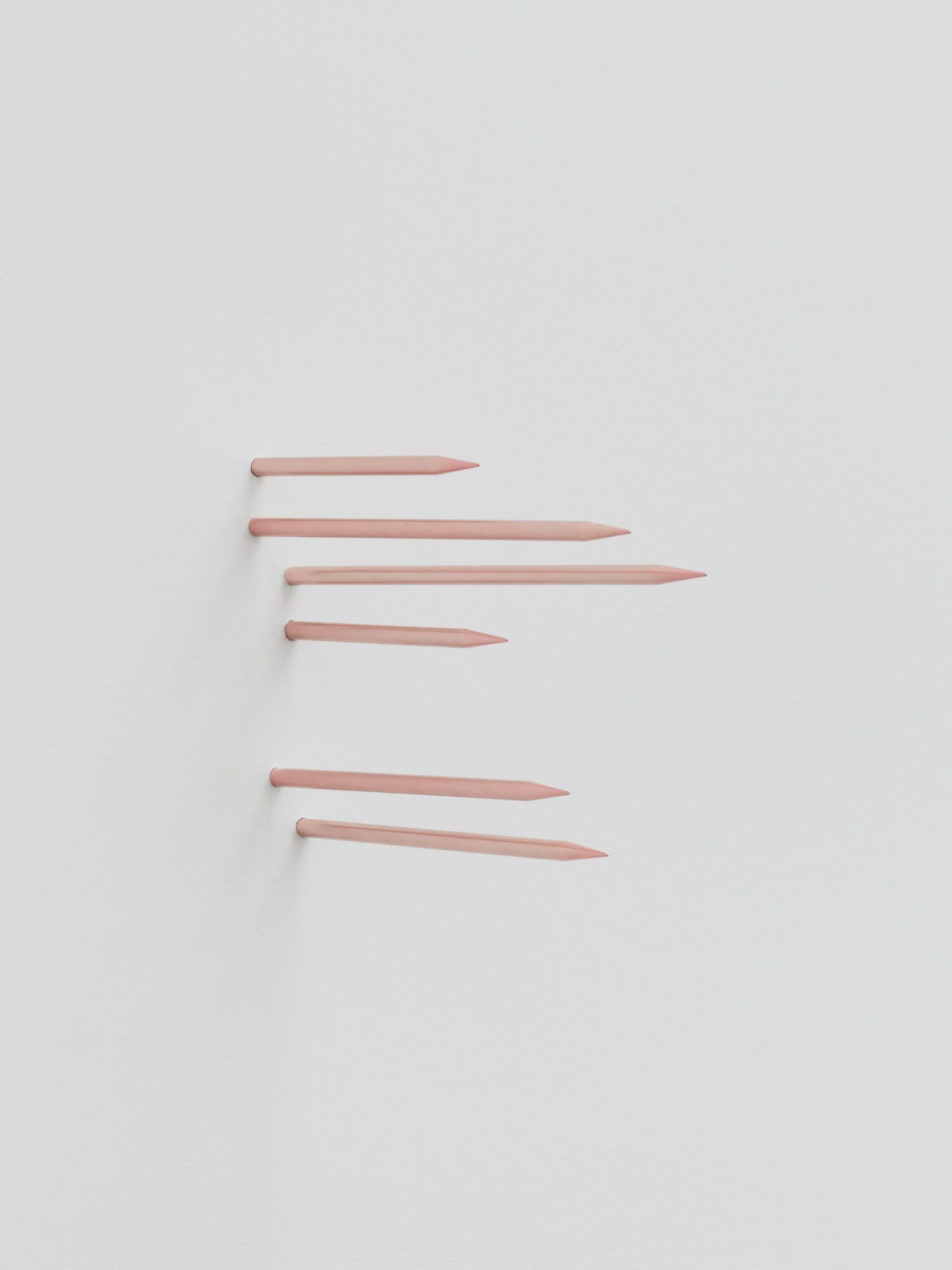Series Collapsed by MPA
MPA, Magic Eye, 2023, acrylic, photocopy prints, screws, 136 x 270 x 7.5 inches [photo: Marten Elder; courtesy of the artist and Night Gallery, Los Angeles]
Share:
Infinity had to start somewhere. ∞, also known as the lemniscate, the ouroboros, or the “lazy eight”—often a line with twin loops, no start and no end—somehow became the cross-cultural logo of the infinite. Maybe it began when an Egyptian drew a snake eating its tail. Maybe it emerged divinely when the Hindus struck the balance between genders. Maybe it was the Celts, or the Gnostics. Supposedly, the Vikings inscribed it on combs for their hair. Some attribute it to the Greeks, though always giving them credit for starting things seems too convenient. We know St. Boniface wrapped it around a cross on his missionary trips in the eighth century to make Christianity seem cooler. We know John Wallis introduced ∞ to mathematics in 1655—but of course we know the name of the British guy who took a universally recognized mystic symbol and made it into a math problem. But, perhaps most importantly, did you know that when you fold infinity in half it looks like a butt?
Credit artist MPA with this discovery. Butts may end the digestion journey, but they also mark an origin point for queer intimacy. Things come out, things go in, perhaps indefinitely. In her exhibition Series Collapsed, currently on view at Night Gallery in Los Angeles, MPA charts the correlation between the ass and the infinite, between death and starting over. While interviewing audience members during a previous show about the potential colonization of Mars, she recognized a pattern: Most people found apocalypse inevitable. They saw a timeline with humanity shattering itself as the grand finale. But isn’t that just the linear colonizer mind talking? Doesn’t time move both ways? For MPA, taking a shit is also a starting gun.
MPA, Series Collapsed, installation view, 2023 [photo: Marten Elder; courtesy of the artist and Night Gallery, Los Angeles]
The show opens with a dead bird. A taxidermic parakeet dangles from a brass bar, its head unsettlingly perked up, a nod to miners’ practice of taking along canaries deep underground as a way to gauge the air quality. If the bird couldn’t breathe, the miners would be next; thus, the canary signals an end that’s not really an end. The canary may die, but the miners retreat to mine again; the infinity loop goes on. And if you listen closely, you’ll hear bird calls through the gallery’s speakers, signaling continuity even in death. If every ending marks a beginning, then the tape loop plays both ways.
MPA, Bird, 2023, brass, parakeet, single channel sound, 5 x 37 x 2.5 inches [photo: Marten Elder; courtesy of the artist and Night Gallery, Los Angeles]
Magic Eye (2023) features photocopy prints of iPhone screenshots, mounted in acrylic and arranged to resemble a massive Ajna, the third eye. Upon closer inspection, each screen capture of MPA’s lock screen reveals a numeric palindrome—12:21, 3:43, etc. What began as a coincidence (every time she checked the time, it would be the same backward and forward) became a pattern, a set of correspondences. Here, she cites recently deceased trans tarot expert Rachel Pollack as inspiration. In Pollack’s book Seventy Eight Degrees of Wisdom, the author reminds the reader that randomness is a modern concept. Although Aristotle wrote about cause and effect a few thousand years ago, only in the past few centuries has Western Science been so driven by this compulsion to put one before, and one after. Correspondence has reigned, and in many parts of the world, it still does. And if infinite systems careen in infinite directions, then perhaps distinguishing origins from ends feels unnecessary. Maybe those patterns still flow, maybe they never stopped. Isn’t MPA’s iPhone, day after day, pointing toward infinity? Is it not acting in dual ways, as capitalist supertool and spirit guide? Is it not asking her to read time itself as less front to back, and a little more back end first?
In Butt2Butt (2023), cheeks press to form the lemniscate. In ButterFLY (2023) and butterFLY /_\ (2023), two asses face each other from opposing gallery walls—one open, one closed. Atop each sits the titular, brightly winged insect, often a symbol of resurrection. Could every cocoon be a butt that shits butterflies? The sculpture 00 / (2023) shapes gravel into the aforementioned folded infinity, its rocks resembling an ass with a leg escaping. MPA posits that by tuning in to correspondences, one can walk away from the imposition of linearity. The bird is warning us: Save yourselves, see the loops.
MPA, But2Butt, 2023, aluminum print, 54.25 x 48 inches [photo: Paul Salveson; courtesy of the artist and Night Gallery, Los Angeles]
MPA, But, But… Butt, installation detail, 2023, aluminum print on aluminum frame, 63.5 x 88 x 1.5 inches [photo: Paul Salveson; courtesy of the artist and Night Gallery, Los Angeles]
The color red dots the show with a sacral imperativeness, as in Red Rear Light (2023), a photograph of a car from behind, asking viewers to pump the brakes before they crash. But when I really turn my math brain off at Series Collapsed, I tune in to the pink. It illuminates the junction between the exhibition’s twin showrooms, as if asking us to move with softness through the intersection where the loops meet. In Pink Direction (2023), tucked in a nook, pastel spikes jut from the wall, hinting at another duality: Even soft colors can prick you. Infinity can also mean balancing the rough and the supple.
MPA, Series Collapsed, installation view, 2023 [photo: Marten Elder; courtesy of the artist and Night Gallery, Los Angeles]
The spikes gesture at an intimate room where patrons can spend time with MPA, one on one, every Saturday. When I entered, our conversation looped toward theater, with MPA telling me she was revisiting her early acting days by taking a Stella Adler class, in which she had to perform and memorize a poem. The poem assigned to her? Sylvia Plath’s “Lady Lazarus,” in which Plath describes the process of dying and resurrecting herself over and over. One stanza reads, “Dying / Is an art, like everything else.” Coincidence? I think not.
MPA, Untitled, installation detail, 2023, pigment print, 14 x 13.5 x 2 inches [photo: Nik Massey; courtesy of the artist and Night Gallery, Los Angeles]
MPA, Pink Direction, 2023, aluminum, enamel paint, dimensions variable [photo: Marten Elder; courtesy of the artist and Night Gallery, Los Angeles]
Patty Gone is a performer, poet, artist, and scholar. She is the author of Love Life (Mount Analogue, 2019) and her writing has appeared in publications including The Believer, Hyperallergic, Howlr
